L01 Introduction to Microbiology
一、The Evolution of Microorganisms and Microbiology
The types of microorganisms
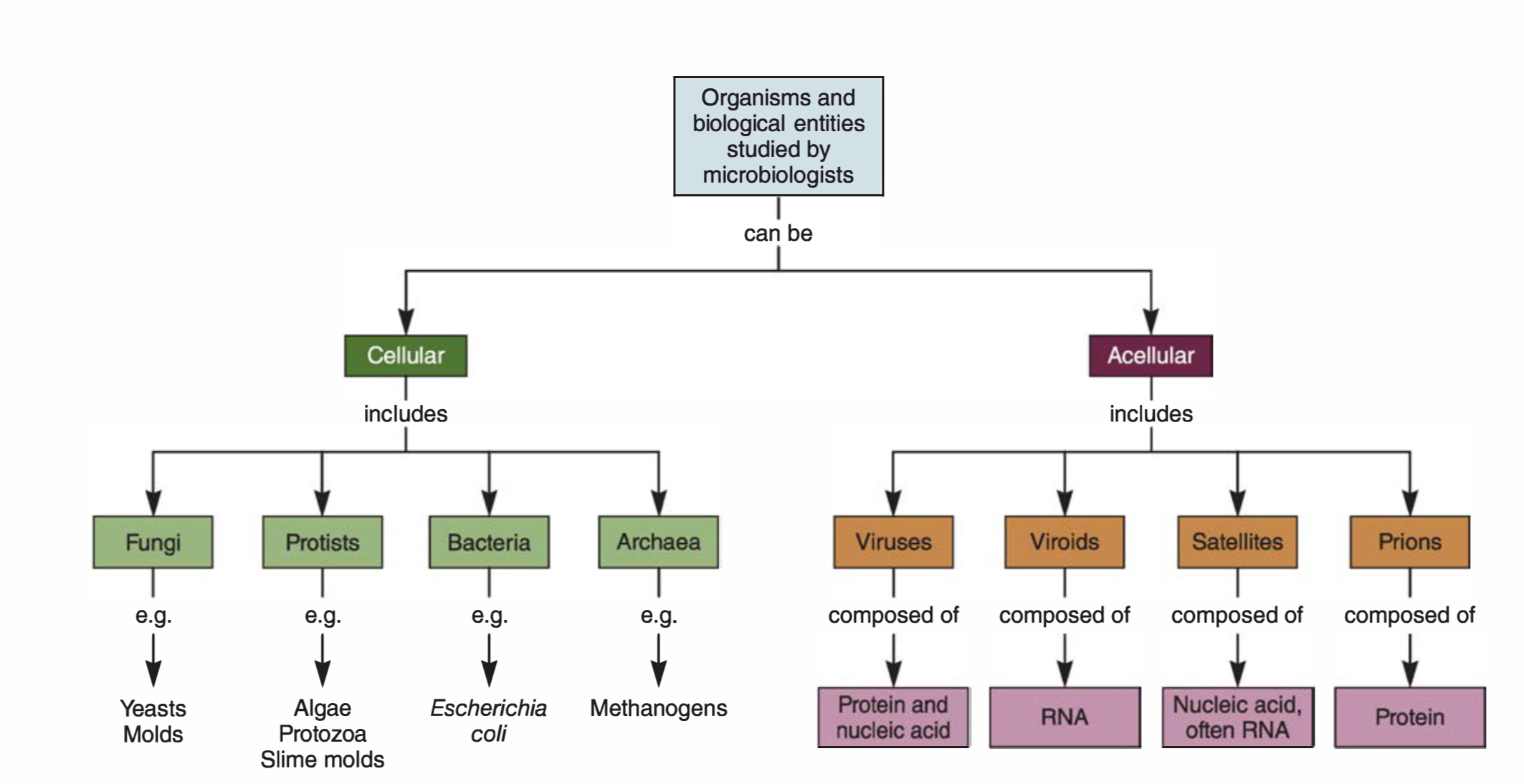
Microorganisms are defined as those organisms and acellular biological entities too small to be seen clearly by the unaided eye.
Classification Schemes
**Three domain system, **: based on a comparison of ribosomal RNA genes, divides microorganisms into
- Bacteria (true bacteria),
- Archaea
- Eukarya (eukaryotes)
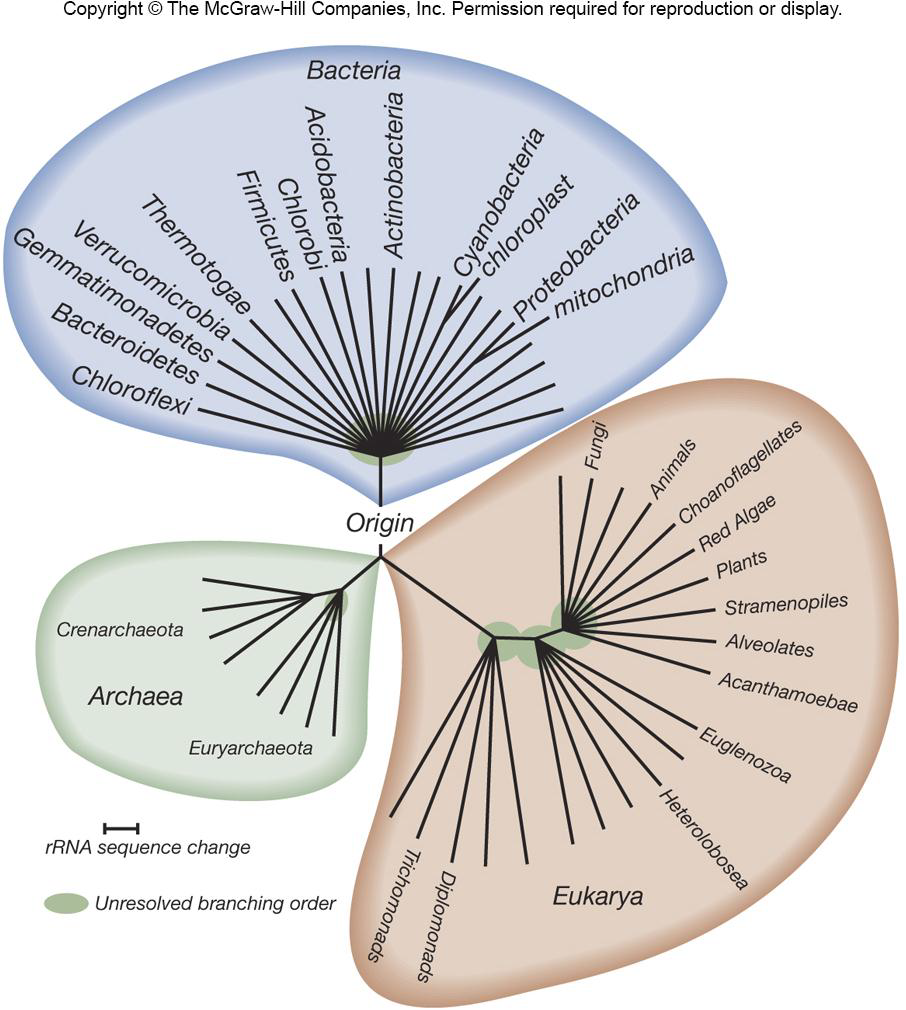
1. Domain Bacteria(细菌)
- Usually single-celled
- Majority have cell wall with peptidoglycan(肽聚糖)
- Most lack a membrane-bound nucleus,缺少核膜包被的细胞核
- Ubiquitous(无处不在) and some live in extreme environments
- Cyanobacteria(蓝细菌) produce significant amounts of oxygen
2. Domain Archaea(古菌)
- Distinguished from Bacteria by unique rRNA gene sequences
- Lack peptidoglycan in cell walls,缺少肽聚糖组成的细胞壁
- Have unique membrane lipids
- Some have unusual metabolic characteristics
- Many live in extreme environments
3. Domain Eukarya - Eukaryotic(真核生物)
Protists(原生生物) – generally larger than Bacteria and Archaea
- algae – photosynthetic
- protozoa(原生动物) – may be motile(能动性,意指能自发且独立地移动。)
- slime molds(黏菌) – two life cycle stages, live freely as single cells, but aggregate together to form multicellular reproductive structures.
- water molds(卵菌纲 Oomycete,也称水霉) – devastating disease in plants
Fungi
- yeast - unicellular
- mold - multicellular
Acellular(非细胞的) Infectious Agents
1. Viruses
- smallest of all microbes
- requires host cell to replicate
- cause range of diseases, some cancers
2. Viroids(类病毒) and virusoids(拟病毒) (satellites)
infectious agents composed of RNA
类病毒(Viroids)是一种具有传染性的单链RNA病原体。它比病毒要小,且没有典型病毒所有的蛋白质外壳。类病毒为严格寄生物,专一性很强,通常感染高等植物,并集成到植物的细胞核内进行复制。类病毒通常通过种子或花粉传播。
RNA replication of virusoids is similar to that of viroids but, unlike viroids, virusoids require that the cell also be infected with a specific “helper” virus. There are currently only five described types of virusoids and their associated helper viruses. The helper viruses are all from the family of Sobemoviruses.
拟病毒是感染病毒的病毒。
3. Prions – infectious proteins
朊毒体 Prion,又称朊病毒。
二、Origin of Life
Study of microorganisms
Tools used for the study
- microscopes
- culture techniques
- molecular genetics
- genomics
Discovery of Microorganisms
1. Robert Hook: Micrographia in 1665
The first drawings of Mucor 毛霉菌
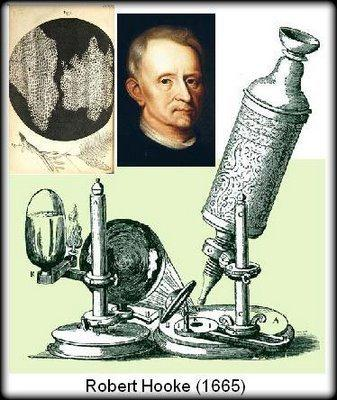
2. Antony van Leeuwenhoek (1632-1723)
first person to observe and describe microorganisms accurately
3. Louis Pasteur (1822-1895)
‘Swan-neck flask’ experiments
placed nutrient solution in flasks
created flasks with long, curved necks
boiled the solutions
left flasks exposed to air
results: no growth of microorganisms
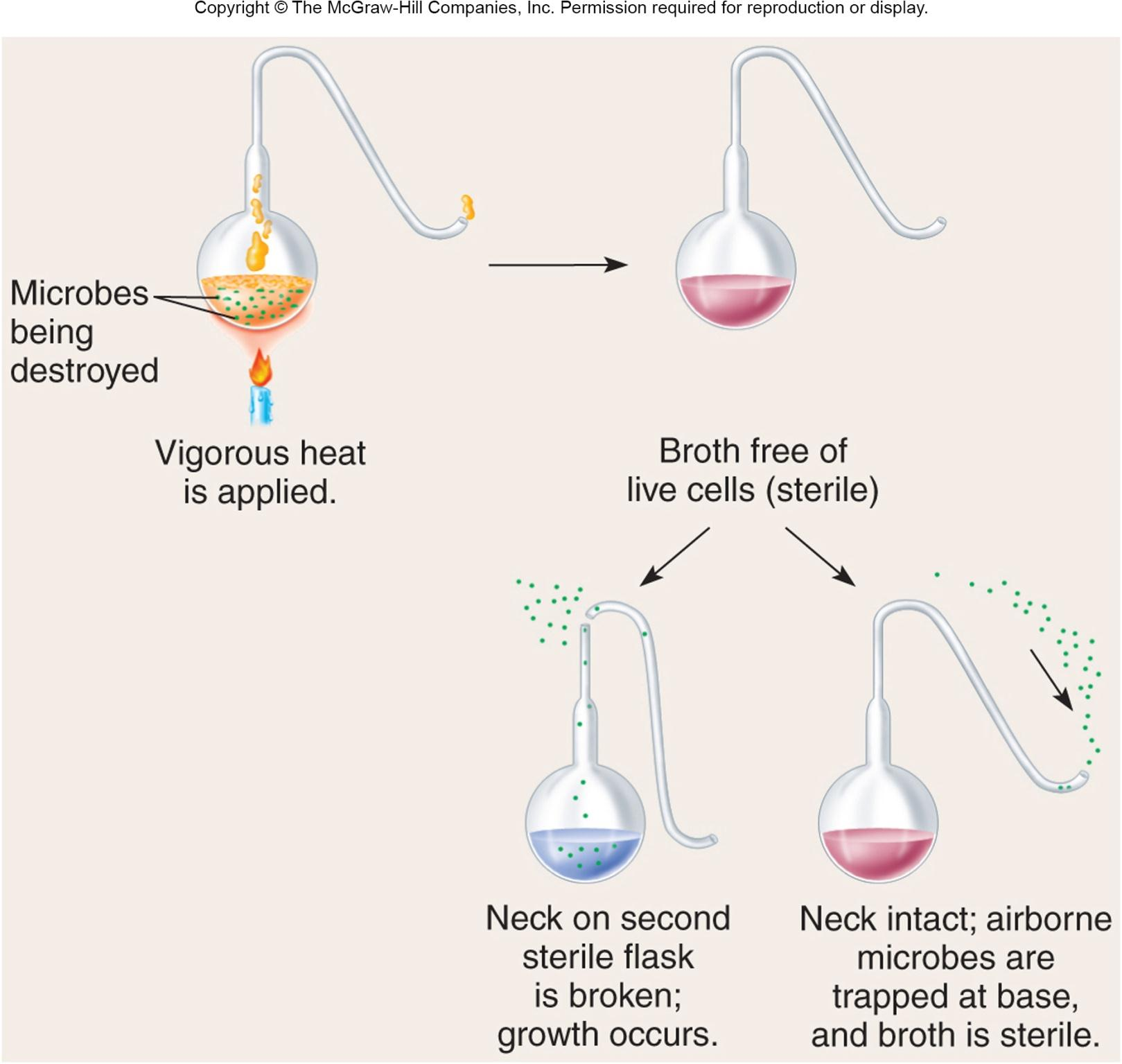
4. John Tyndall (1820-1893)
demonstrated that dust carries microorganisms
showed that if dust was absent, nutrient broths remained sterile, even if directly exposed to air
also provided evidence for the existence of exceptionally heat-resistant forms of bacteria
5. Ferdinand Cohn (1828-1898)
heat-resistant bacteria could produce endospores
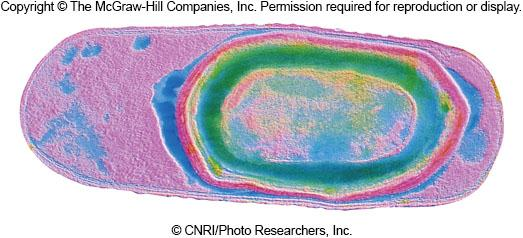
三、The Role of Microorganisms in Disease
Evidence for the Relationship between Microorganisms and Disease
1. Louis Pasteur
- demonstrated microorganisms carried out fermentations, helping French wine industry
- developed pasteurization to avoid wine spoilage by microbes
- showed that the pébrine disease (脑膜疾病) of silkworms was caused by a protozoan

2. Robert Koch (1843-1910) – Final Proof
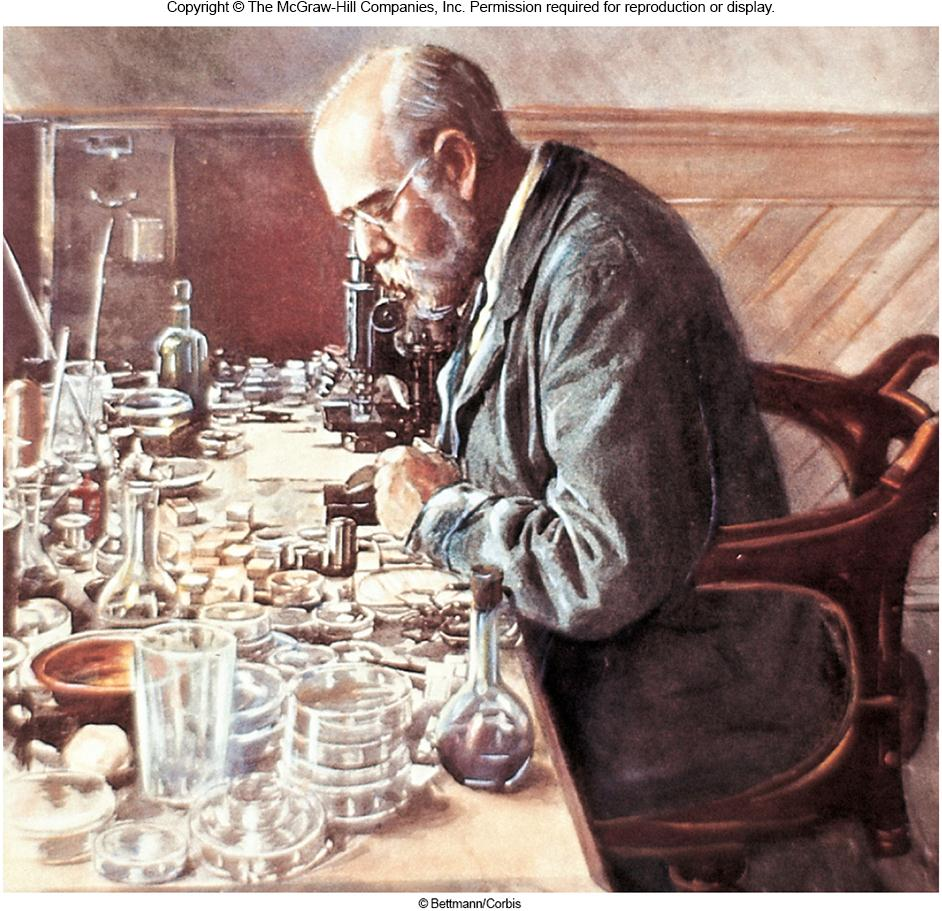
Robert Koch (1843-1910)
- established the relationship between Bacillus anthracis(炭疽杆菌) and anthrax 炭疽(病)
Koch’s postulates 科赫的假设
- still used today to establish the link between a particular microorganism and a particular disease
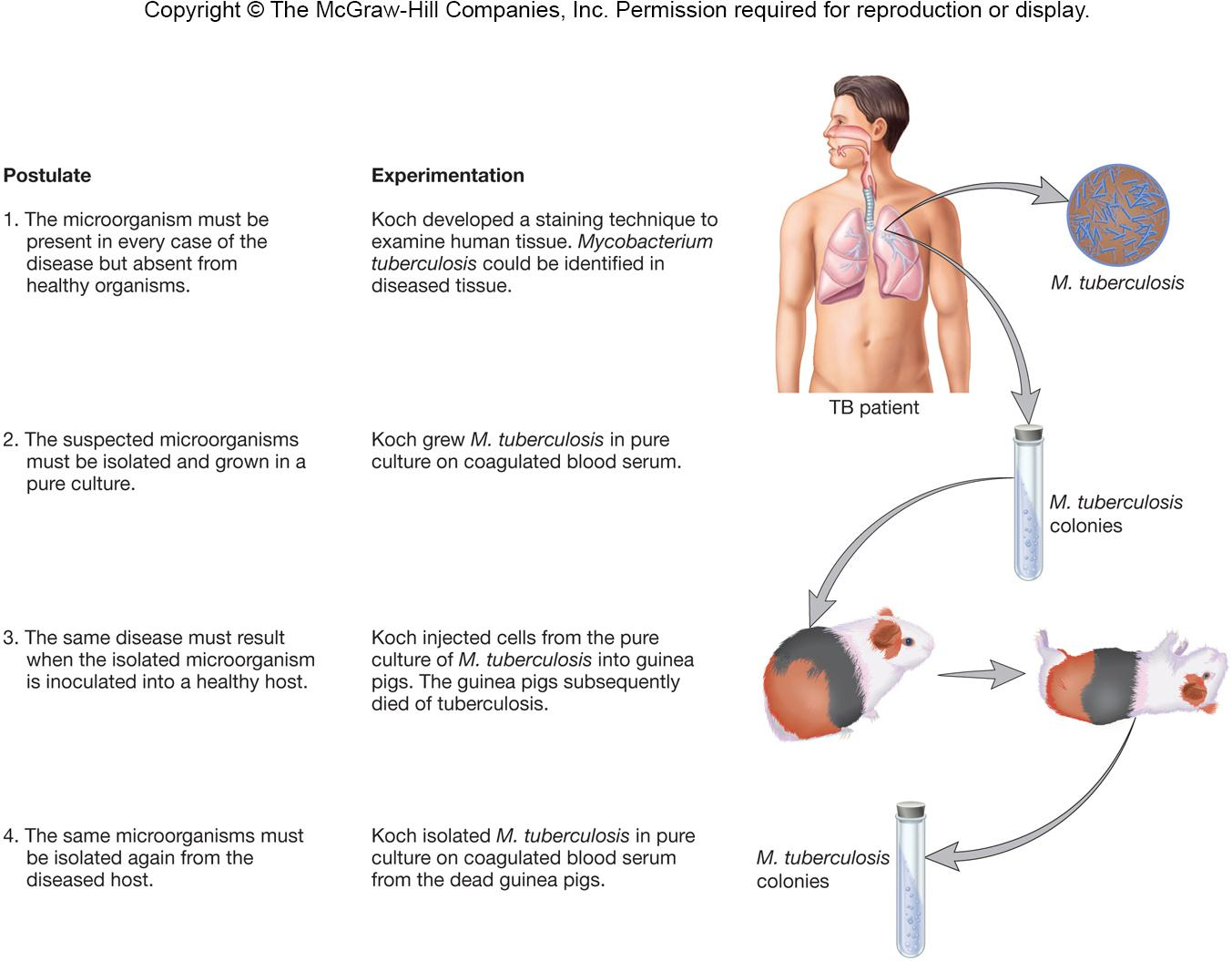
Limitations of Koch’s Postulates
- Some organisms cannot be grown in pure culture
- Using humans in completing the postulates is unethical
- Molecular and genetic evidence may replace and overcome these limits
The Development of Techniques for Studying Microbial Pathogens
• Koch’s work led to discovery or development of:
- agar and Petri dishes
- nutrient broth and nutrient agar
- methods for isolating microorganisms
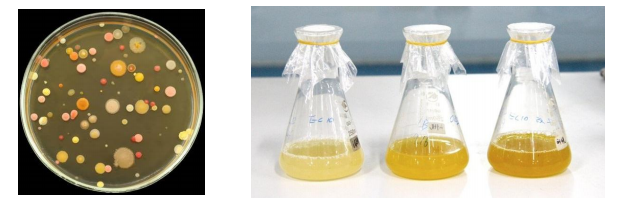
Other Developments
1. Charles Chamberland (1851-1908)
developed porcelain bacterial filters(瓷细菌过滤器) (viruses pass)
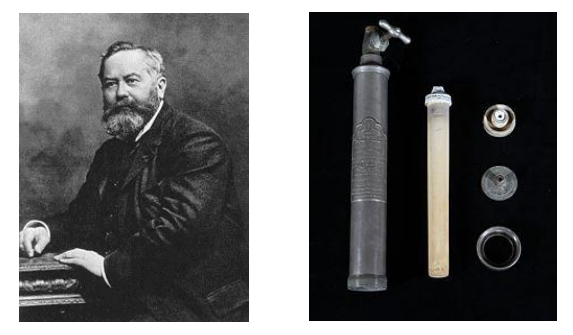
2. Pasteur and Roux
discovered that incubation of cultures for long intervals between transfers caused pathogens to lose their ability to cause disease (termed ‘attenuation’(变薄,稀薄化,变细,衰减))
3. Pasteur and his coworkers
developed vaccines for chicken cholera, anthrax, and rabies
四、Microbiology Today
Molecular and Genomic Methods
Led to a second golden age of microbiology (rapid expansion of knowledge)
Discoveries
- restriction endonucleases (Arber and Smith)
- first novel recombinant molecule (Jackson, Symons, Berg)
- DNA sequencing methods (Woese, Sanger)
- bioinformatics and genomic sequencing and analysis
Major Fields in Microbiology
- Medical microbiology
- Public health microbiology
- Immunology
- Microbial ecology
- Agricultural microbiology
- Industrial microbiology
- Microbial physiology
- etc.